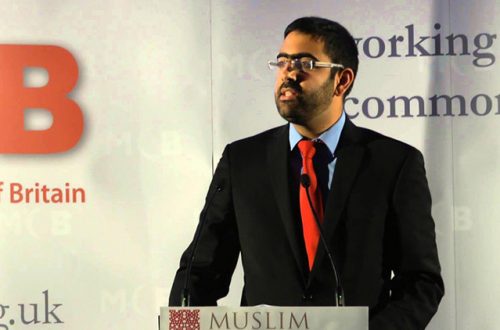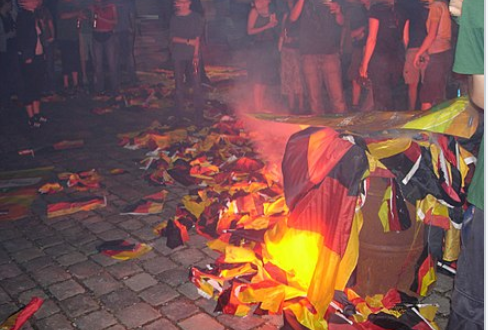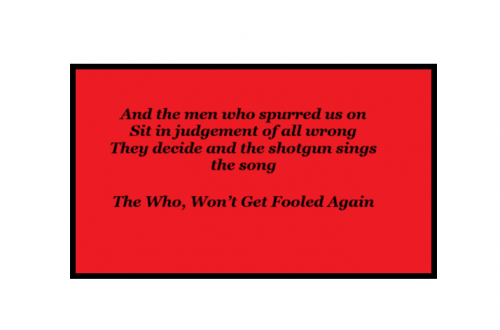I was struck by a sense of déjà vu when reading Sarah’s post about the cancelling of Kate Smurthwaite’s comedy show at Goldsmiths, University of London. Her post should be read before what I copy below, an extract from a 1992 edition of the New York Times. When will we progress?
New York Times, November 13, 1992, p.B16
Furor on Exhibit at Law School Splits Feminists
Are pornography and prostitution more dangerous than censorship?
By TAMAR LEWIN
The closing of an art exhibit on prostitution two weeks ago has plunged the University of Michigan law school in Ann Arbor into an angry debate about free speech, feminism, pornography and censorship.
Legally, the issue is whether students at the school violated the First Amendment guarantee of free speech by removing from the exhibit a two-hour videotape featuring works about prostitution by five artists, including two former prostitutes.
But politically, the fracas is the latest and most virulent outbreak of tensions between two camps of feminists: those who seek to suppress pornography and prostitution, arguing that they incite sexual violence and violate women’s civil rights, and those who say the anti-pornography, anti-prostitution movement is a form of censorship that limits women’s sexuality and free-speech rights.
…the furor occurred at the University of Michigan, whose law faculty includes Catharine A. MacKinnon, a leader in the fight against pornography…. Carol Jacobsen, the Detroit artist who put together the art exhibit at the request of [Michigan Journal of Gender & Law] staff, has been an outspoken critic of Ms. MacKinnon’s anti-pornography efforts…. Her exhibit… included her own video interviews with Detroit prostitutes, who are referred to as “sex workers” by conference organisers.
When the conference began, she also installed a two-hour videotape featuring five works, including one by Veronica Vera, a former prostitute. Ms. Vera’s work included footage from sex films and a brief clip of her testifying against an anti-pornography measure before a United States Senate committee.
The next morning, that videotape was removed by a group of law students from the journal staff…..“We really didn’t think of it as a censorship issue, but as a safety issue, because two of our speakers said that based on their experience at other events, the tape would be a threat to their safety,” said Bryan Wells, one of the students. “….Seven of us from the journal made the decision to remove the tape, and while I regret that it made people unhappy, I don’t regret the decision.”
Ms. MacKinnon, who stressed that she was not involved in the decision to pull the video, said she supported the students’ action….she said… “If these materials are pornography – and I haven’t seen them so I can’t say – it is not a question of their offensiveness, but of safety and equality for women. Showing pornography sets women up for harassment and rape.” ….
Ms. MacKinnon sees the furor as an attempt to smear her and another speaker at the conference, Andrea Dworkin, a New York writer who has been her ally in years of efforts against pornography.
“My real view, so far as this pertains to me, is that this is a witchhunt by First Amendment fundamentalists who are persecuting and blacklisting dissidents like Andrea Dworkin and myself as arts censors,” said Ms. MacKinnon. “I don’t see it as a fight within feminism but a fight between those who wish to end male supremacy and those who wish to do better under it.”
Civil libertarians say the events illustrate the extremism of Ms. MacKinnon’s views, and how easily they can be used to censor women’s free expression.
“It’s hard to articulate how damaging the femino-censors can be, but this is a perfect example of how the MacKinnon crusade hurts women,” said Marjorie Heins, director of the American Civil Liberties Union’s National Arts Censorship Project. Censorship of sexually explicit material is not in women’s interest. It’s also unconstitutional. Michigan is a state school, and when any government institution removes an art exhibit or book because it expresses ideas some people find offensive, there’s a First Amendment problem.” ….
Several of the students who organized the conference said it has been impossible to get both viewpoints.
“We had a problem as soon as we invited speakers, because some of the key anti-prostitution people accepted on the condition that they wouldn’t speak if there were people from the other side there,” said Lisa Lodin, one of the students who organised the conference. “…Part of the reason we wanted Carol Jacobsen’s exhibit so much was to show the other side, without confrontation.”
Ms. Lodin and several other students said they were so discouraged by the turn of events that they had begun to reexamine their attitude toward feminism.
“This is not women uniting to solve problems,” Ms. Lodin said. “This is just women fighting against each other.”


